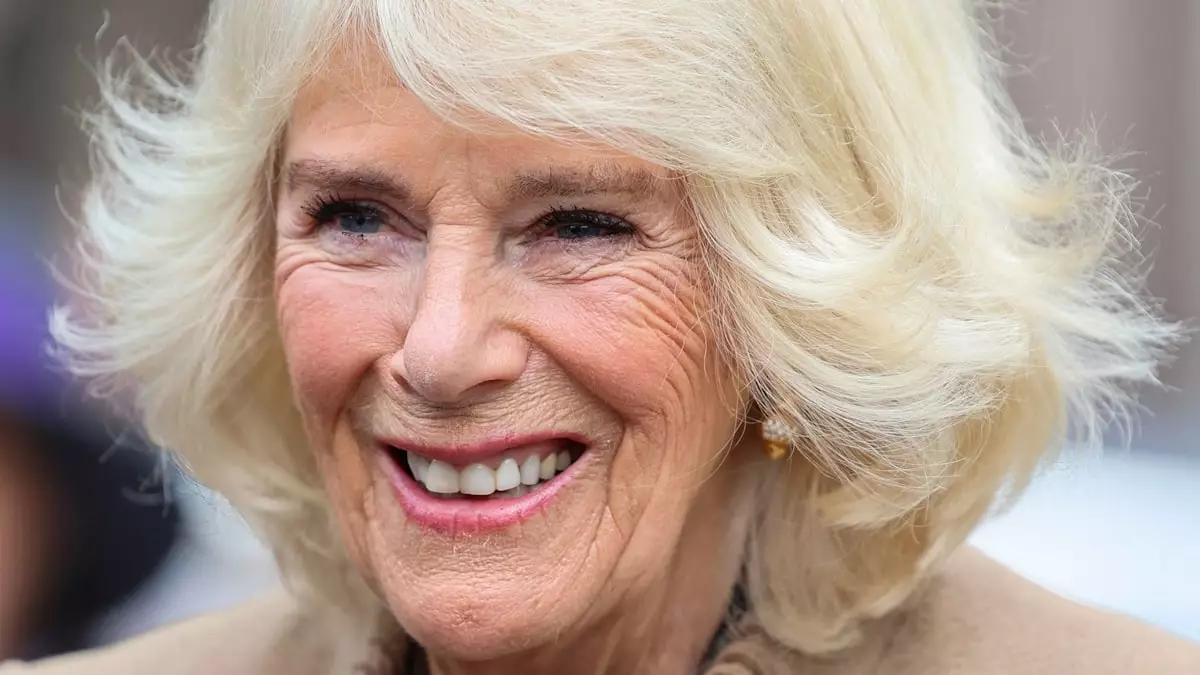On a delightful Saturday afternoon, Queen Camilla stepped elegantly into the public eye at the prestigious Ascot Racecourse in Berkshire. Making a solo appearance, she graced the Ascot Chase Raceday, where her role extended beyond being a spectator; she served as a judge for the ‘Best Turned Out Horse’ in the ‘Ebony Horse Club Reynoldstown Novices’ Chase’. This occasion marks yet another instance of the royal family engaging with equestrian traditions, deeply rooted in British culture. Following her judging duties, Camilla took the time to present trophies to the winning connections and interacted with young individuals benefiting from the numerous initiatives supported by the Ebony Horse Club, showcasing her commitment to youth development and community engagement.
At the age of 77, Camilla continues to captivate fashion enthusiasts and royal watchers alike with her sophisticated attire. For this occasion, she donned a tailored cream coat designed by Fiona Clare, which featured a charming peter pan collar—an element that added a playful yet refined touch to her overall ensemble. Complementing her winter attire, she accessorized with suede knee-high boots, providing both style and comfort as she navigated the bustling racetrack environment. Adding personality to her outfit, Camilla sported a fur-trimmed hat and leather gloves, alongside a handbag by Apsinal of London, which emphasized her chic appearance.
Yet, it was her choice of jewelry that truly elevated her look. The horseshoe brooch, adorned with sapphires and rubies, was not just a mere accessory; it held historical significance and sentimental value. The brooch, inscribed with the name ‘Minoru’, commemorates one of King Edward VII’s most successful racehorses, which won the Derby in 1909. This emblem of good fortune reflects Camilla’s deep-rooted connection to royal equine history and brings a touch of heritage to her modern style.
The horseshoe brooch itself is steeped in stories of luck and abundance. Minoru’s triumph holds a notable place in the annals of royal history, as it symbolized a distinctive achievement for a reigning monarch in the world of horse racing. Camilla’s choice to don this piece, including on various earlier occasions like New Year’s Day 2023 and Ascot’s November Racing Weekend in 2022, serves as a bridge connecting contemporary royal life with its rich past.
In addition to this timeless piece, it is known that the British royal family, particularly Camilla, often borrows exquisite jewelry from the late Queen Elizabeth II’s collection. For instance, Camilla’s previous appearance in a ‘Raspberry Pip’ brooch, reputedly featuring diamonds and topaz, not only showcased her versatile style but also linked her to the late Queen’s legacy, underscoring the continuity of royal tradition through shared heirlooms.
Queen Camilla’s public appearances are not limited to fashion and horse racing; they encompass a wider agenda that includes charity work and fostering cultural appreciation. Earlier in the week, she and King Charles hosted a lavish black-tie dinner at Highgrove, emphasizing their dedication to culinary arts and international cultures. The event, rich in Italian heritage, was attended by notable figures, including celebrities like David and Victoria Beckham and Dame Helen Mirren. The menu, curated by Chef Francesco Mazzei, was inspired by esteemed actor Stanley Tucci, illustrating the royal couple’s efforts to promote global harmony through gastronomy.
During this soirée, Tucci’s tribute to the King’s Foundation highlighted the significance of living in concord with nature, aligning with initiatives that promote sustainability and well-being—core values championed by the royal family.
In summation, Queen Camilla’s recent engagements, from her poised presence at the Ascot Racecourse to celebrating Italian cuisine with distinguished guests, reflect a blend of royal elegance, cultural appreciation, and commitment to community welfare. As she gracefully melds tradition with modernity, her actions not only captivate public interest but also signify the enduring importance of royal duties in contemporary society.

